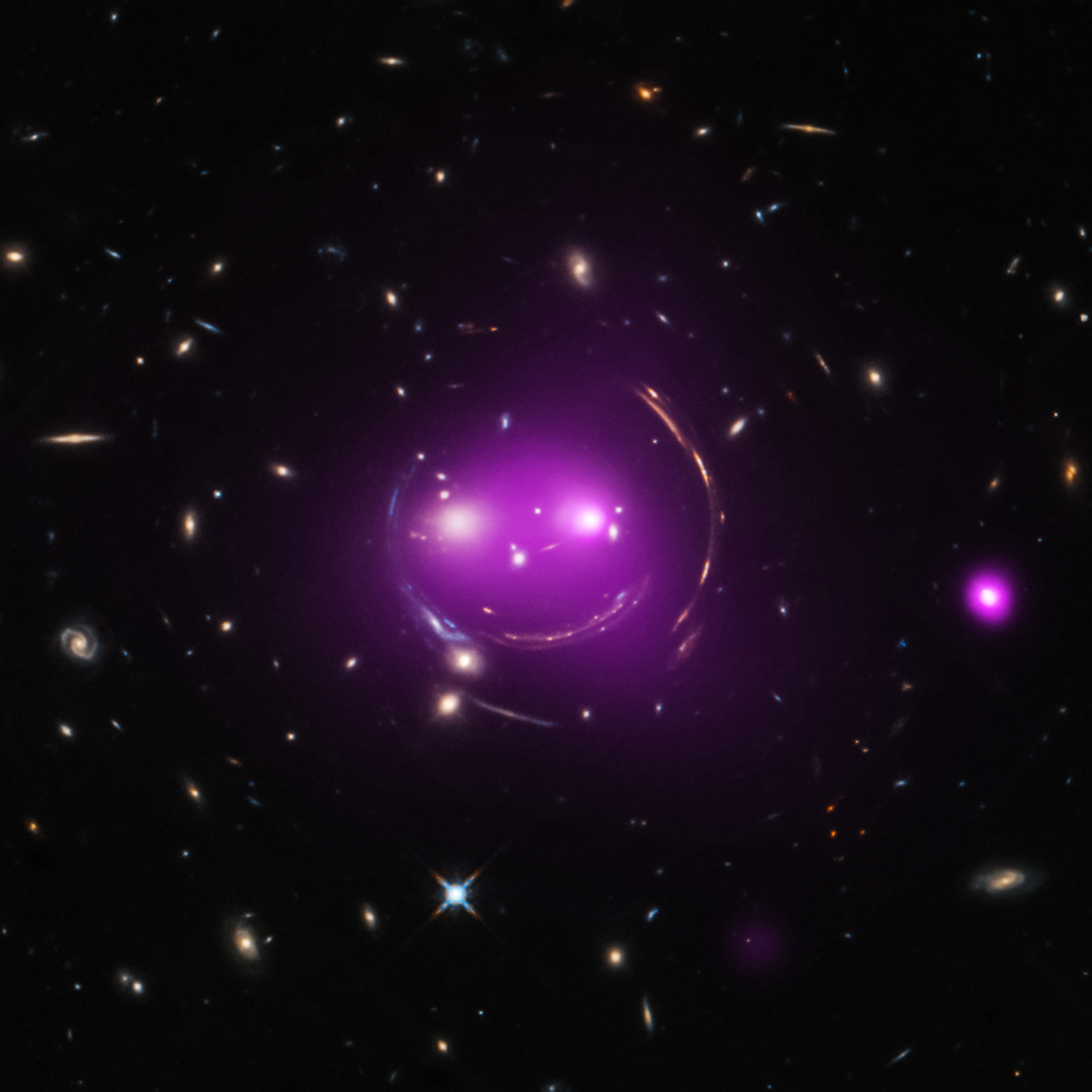
Copyright:
原文:
Albert Einstein’s general theory of relativity, published 100 years ago this month, predicted the phenomenon of gravitational lensing. And that’s what gives these distant galaxies such a whimsical appearance, seen through the looking glass of X-ray and optical image data from the Chandra and Hubble space telescopes. Nicknamed the Cheshire Cat galaxy group, the group’s two large elliptical galaxies are suggestively framed by arcs. The arcs are optical images of distant background galaxies lensed by the foreground group’s total distribution of gravitational mass dominated by dark matter. In fact the two large elliptical “eye” galaxies represent the brightest members of their own galaxy groups which are merging. Their relative collisional speed of nearly 1,350 kilometers/second heats gas to millions of degrees producing the X-ray glow shown in purple hues. Curiouser about galaxy group mergers? The Cheshire Cat group grins in the constellation Ursa Major, some 4.6 billion light-years away.
中文翻譯:
這個月慶祝阿爾伯特·愛因斯坦的廣義相對論發表100週年,這一理論預言了引力透鏡(gravitational lensing)現象。來自錢德拉(Chandra)和哈勃(Hubble)太空望遠鏡的X射線和光學影像數據讓這些遙遠的星系呈現出奇幻的外觀。這個被稱為「切莎貓星系團」(Cheshire Cat galaxy group)的星系團中,兩個大型橢圓星系恰好被光弧框住。這些弧是遠處背景星系的光學影像,受到前景星系團的總引力質量影響,該質量主要來自暗物質(dark matter)。事實上,這兩個大型橢圓「眼睛」星系是自己所在星系團中最亮的成員,而這些星系團正進行合併。它們的相對碰撞速度接近每秒1,350公里,將氣體加熱至數百萬度,產生如紫色光輝般的X射線發光。想知道更多關於星系團合併的事嗎?切莎貓星系團位於大熊座(Ursa Major),距離地球約46億光年。
#切莎貓星系團 #引力透鏡 #宇宙奇幻 #愛因斯坦 #廣義相對論 #星系合併 #錢德拉 #哈勃 #暗物質 #X射線宇宙
來源:NASA每日圖片


